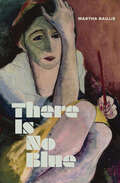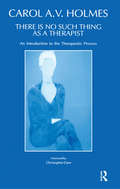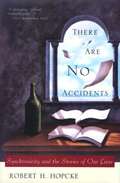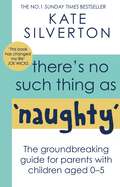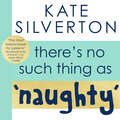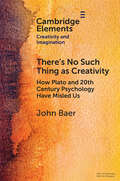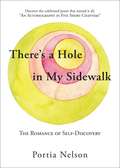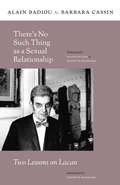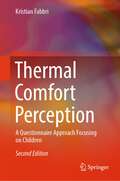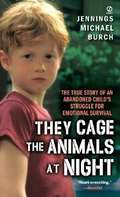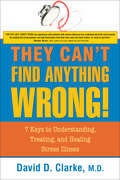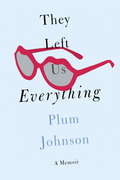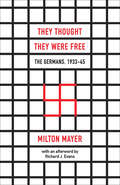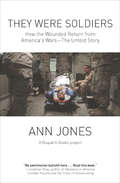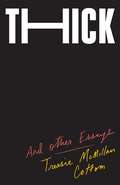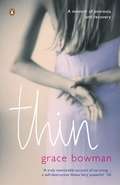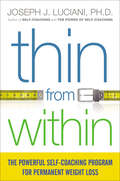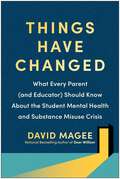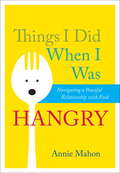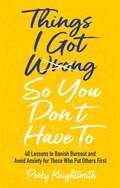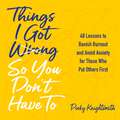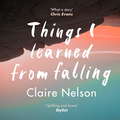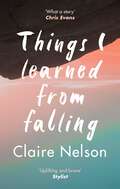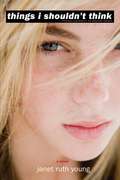- Table View
- List View
There Is No Blue
by Martha BaillieTHE GLOBE AND MAIL: BOOKS TO READ IN FALL 2023Martha Baillie’s richly layered response to her mother’s passing, her father's life, and her sister’s suicide is an exploration of how the body, the rooms we inhabit, and our languages offer the psyche a home, if only for a time. Three essays, three deaths. The first is the death of the author’s mother, a protracted disappearance, leaving space for thoughtfulness and ritual: the washing of her body, the making of a death mask. The second considers the author’s father, his remoteness, his charm, a lacuna at the centre of the family even before his death, earlier than her mother’s. And then, the shocking death of the author’s sister, a visual artist and writer living with a diagnosis of schizophrenia, who writes three reasons to die on her bedroom wall and then takes her life."Martha Baillie’s novels are thrillingly, joyously singular, that rare combination of sui generis and just plain generous. That There Is No Blue, her memoir, is all of those things too, is no surprise; still, she has gone somewhere extraordinary. This triptych of essays, which exquisitely unfolds the “disobedient tale” of the lives and deaths of her mother, her father, and her sister, is a meditation on the mystery and wonder of grief and art making and home and memory itself. It made me think of kintsugi, the Japanese art of repair, in which the mending is not hidden but featured and beautifully illuminated. Baillie’s variety of attention, carved out of language, is tenderness, is love." – Maud Casey, author of City of Incurable Women"This is a stunning memoir, intense and meticulous in its observations of family life. Baillie subtly interrogates and conveys the devastating mistranslations that take place in childhood, the antagonism and porousness of siblings, and the tragedy of schizophrenia as it unfolds. I couldn’t put it down." – Dr. Lisa Appignanesi, author of Mad, Bad and Sad and Everyday Madness"Exquisite." – Souvankham Thammavongsa, author of How to Pronounce Knife"I am grateful for this profound meditation on family and loss.” – Charlie Kaufman, filmmaker"This strange, unsettling memoir of outer life and inner life and their bizarre twining captures the author’s identity by way of her mother’s death, her sister’s failing battle with mental illness, and the mysterious figure of her father. It combines anguished guilt, deep tenderness, and bemused affection in highly evocative, often disturbing prose. Its brave honesty is amplified by a persistent lyricism; its undercurrent of fear is uplifted by a surprising, resilient hopefulness. It is both a plea for exoneration and an act of exoneration, an authentic meditation on the terrible difficulty of being human." – Andrew Solomon, author of The Noonday Demon
There Is No Such Thing As A Therapist: An Introduction to the Therapeutic Process
by Carol HolmesThis book deals with the link between the purpose of therapy and the boundaries of the therapeutic situation, which - the author argues - derive from the omnipresence of the anxiety surrounding separations and death. The theoretical framework of this book is part of a developmental line from Freud, Klein and Winnicott to Langs, via Sartre and Buber.
There are no Accidents
by Robert H. HopckeAn informal examination of Jung's theory of synchronoicity through the telling of stories.
There's No Such Thing As 'Naughty': The groundbreaking guide for parents with children aged 0-5: THE #1 SUNDAY TIMES BESTSELLER
by Kate SilvertonTHE #1 SUNDAY TIMES BESTSELLER'This book has changed my life' Joe Wicks'As a parenting support book this is in a class of its own . . . It is perhaps the most helpful book for parents of children of any age' Professor Peter Fonagy, CEO Anna Freud National Centre for Children & Families'This is a book that will change lives' Dr Suzanne Zeedyk, Infant Psychologist'This book is absolutely brilliant! I love that it is about parenting a healthy brain' Dr Guddi Singh, Paediatrician and Health CampaignerWant to know the secret to tackling tantrums and tears, stopping squabbles in seconds AND lay the foundations for your child's good mental health in the process? In There's No Such Thing As 'Naughty', mum to two young children, journalist and children's mental health advocate Kate Silverton shares her groundbreaking new approach to parenting under-fives that helps to make family life so much easier and and certainly a lot more fun!Kate's unique strategies, easy-to-follow scripts and simple techniques will enable you to manage those tricky everyday challenges with ease - and help you to enjoy the strongest bond possible with your child, both now and in the years ahead. Endorsed by leading figures in the field of children's mental health, at the heart of the book is a simple and revelatory way to understand how your child's brain develops and how it influences their behaviour. Rooted in the latest science - explained really simply - this engaging, accessible and warm parenting guide will redefine how you see and raise your children, with a new understanding that for under-fives, there can be no such thing as 'naughty'.
There's No Such Thing As 'Naughty': The groundbreaking guide for parents with children aged 0-5: THE #1 SUNDAY TIMES BESTSELLER
by Kate SilvertonTHE #1 SUNDAY TIMES BESTSELLER'This book has changed my life' Joe Wicks'As a parenting support book this is in a class of its own . . . It is perhaps the most helpful book for parents of children of any age' Professor Peter Fonagy, CEO Anna Freud National Centre for Children & Families'This is a book that will change lives' Dr Suzanne Zeedyk, Infant Psychologist'This book is absolutely brilliant! I love that it is about parenting a healthy brain' Dr Guddi Singh, Paediatrician and Health CampaignerWant to know the secret to tackling tantrums and tears, stopping squabbles in seconds AND lay the foundations for your child's good mental health in the process? In There's No Such Thing As 'Naughty', mum to two young children, journalist and children's mental health advocate Kate Silverton shares her groundbreaking new approach to parenting under-fives that helps to make family life so much easier and and certainly a lot more fun!Kate's unique strategies, easy-to-follow scripts and simple techniques will enable you to manage those tricky everyday challenges with ease - and help you to enjoy the strongest bond possible with your child, both now and in the years ahead. Endorsed by leading figures in the field of children's mental health, at the heart of the book is a simple and revelatory way to understand how your child's brain develops and how it influences their behaviour. Rooted in the latest science - explained really simply - this engaging, accessible and warm parenting guide will redefine how you see and raise your children, with a new understanding that for under-fives, there can be no such thing as 'naughty'.
There's No Such Thing As 'Naughty': The groundbreaking guide for parents with children aged 0-5: THE #1 SUNDAY TIMES BESTSELLER
by Kate SilvertonTHE #1 SUNDAY TIMES BESTSELLER'This book has changed my life' Joe Wicks'As a parenting support book this is in a class of its own . . . It is perhaps the most helpful book for parents of children of any age' Professor Peter Fonagy, CEO Anna Freud National Centre for Children & Families'This is a book that will change lives' Dr Suzanne Zeedyk, Infant Psychologist'This book is absolutely brilliant! I love that it is about parenting a healthy brain' Dr Guddi Singh, Paediatrician and Health CampaignerWant to know the secret to tackling tantrums and tears, stopping squabbles in seconds AND lay the foundations for your child's good mental health in the process? In There's No Such Thing As 'Naughty', mum to two young children, journalist and children's mental health advocate Kate Silverton shares her groundbreaking new approach to parenting under-fives that helps to make family life so much easier and and certainly a lot more fun!Kate's unique strategies, easy-to-follow scripts and simple techniques will enable you to manage those tricky everyday challenges with ease - and help you to enjoy the strongest bond possible with your child, both now and in the years ahead. Endorsed by leading figures in the field of children's mental health, at the heart of the book is a simple and revelatory way to understand how your child's brain develops and how it influences their behaviour. Rooted in the latest science - explained really simply - this engaging, accessible and warm parenting guide will redefine how you see and raise your children, with a new understanding that for under-fives, there can be no such thing as 'naughty'.
There's No Such Thing as Creativity: How Plato and 20th Century Psychology Have Misled Us (Elements in Creativity and Imagination)
by John BaerMost people (including creativity researchers) act as if they believe that creativity is not simply a useful category or label but a real thing with its own essence (just as Plato would argue that an ideal triangle has an essence that is shared with all actual triangles). Most people (including creativity researchers) also believe that there is a set of general creativity-relevant skills that can be applied to most problems in ways that will lead to more creative outcomes. Creativity research now calls these beliefs into question. A domain-general misunderstanding of the nature of creativity-relevant skills and the equally mistaken belief that creativity exists independently of actual creative things and ideas have together hindered creativity theory, research, assessment, and training. A more domain-specific and nominalist understanding of creativity will free creativity researchers to make progress in areas where it is currently stymied.
There's a Hole in My Sidewalk: The Romance of Self-Discovery
by Portia NelsonTHE ROMANCE OF SELF-DISCOVERY This classic, well-loved guide to life is warm, wise, and funny. Portia Nelson's book and her poem "Autobiography in Five Short Chapters" have been embraced by individuals, therapy groups, and self-help programs around the world.
There’s No Such Thing as a Sexual Relationship: Two Lessons on Lacan (Insurrections: Critical Studies in Religion, Politics, and Culture)
by Barbara Cassin Alain BadiouPublished in 1973, "L'Etourdit" was one of the French philosopher Jacques Lacan's most important works. The book posed questions that traversed the entire body of Lacan's psychoanalytical explorations, including his famous idea that "there is no such thing as a sexual relationship," which seeks to undermine our certainties about intimacy and reality. In There's No Such Thing as a Sexual Relationship, Alain Badiou and Barbara Cassin take possession of Lacan's short text, thinking "with" Lacan about his propositions and what kinds of questions they raise in relation to knowledge. Cassin considers the relationship of the real to language through a Sophist lens, while the Platonist Badiou unpacks philosophical claims about truth. Each of their contributions echoes back to one another, offering new ways of thinking about Lacan, his seminal ideas, and his role in advancing philosophical thought.
Thermal Comfort Perception: A Questionnaire Approach Focusing on Children (Springerbriefs In Applied Sciences And Technology Ser.)
by Kristian FabbriThis book offers a comprehensive exploration of children's understanding and experiences of thermal comfort. The book provides a methodology for evaluating comfort that takes into account the unique perspectives of children. The first part of the book provides an overview of the history of thermal comfort, the human body and environmental parameters, and common thermal comfort indexes. It also offers guidelines for creating questionnaires that accurately assess children's perceptions of indoor thermal comfort. The book then delves into children's understanding of the concepts of comfort and energy, as well as the factors that influence their perception of these concepts. It addresses the psychological and pedagogical aspects of thermal comfort judgment, as well as the architectural and environmental characteristics that contribute to children's perceptions of comfort. First published as Indoor Thermal Comfort Perception, this updated edition also includes new sections on architecture and sensitivity, exploring the impact of classroom spaces on learning, and outdoor education and thermal comfort outdoors, based on qualitative research. These additions provide valuable insights for future studies on these topics. While physical parameter measurements and comfort indexes are useful in thermal comfort, the book emphasizes the importance of ergonomic assessments in the form of questionnaires, which offer unique insights into children's experiences. The book fills a critical gap in understanding children's perceptions of thermal comfort and is essential reading for HVAC engineers, architects, environmental psychologists, and researchers in the medical and cognitive fields.
They Cage the Animals At Night: The True Story of a Child Who Learned to Survive
by Jennings Michael BurchAn autobiography of a boy who learned to reach out for love despite being left in an orphanage and growing up in many foster homes.
They Can't Find Anything Wrong: 7 Keys to Understanding, Treating, and Healing Stress Illness
by David D. ClarkeA specialist in Stress Illness reveals how to identify and remedy this potentially serious health issue that too often goes undiagnosed. Every year, millions of people seek medical care for symptoms that diagnostic tests are unable to explain. Sent away frustrated, or thinking it&’s &“all in their heads,&” the truth is that many of these people are ill because of hidden stresses. Dr. David Clarke has done pioneering work with thousands of these patients, often sent to him as a last resort. In They Can&’t Find Anything Wrong, he offers real solutions to put a stop to the stress illness epidemic. Dr. Clarke describes the major types of stress and explains steps for treatment with a range of effective techniques. Case histories that read like medical mysteries illustrate the concepts and make them easy to apply.
They Left Us Everything: A Memoir
by Plum JohnsonA warm, heartfelt memoir of family, loss, and a house jam-packed with decades of goods and memories. After almost twenty years of caring for elderly parents--first for their senile father, and then for their cantankerous ninety-three-year old mother--author Plum Johnson and her three younger brothers have finally fallen to their middle-aged knees with conflicted feelings of grief and relief. Now they must empty and sell the beloved family home, twenty-three rooms bulging with history, antiques, and oxygen tanks. Plum thought: How tough will that be? I know how to buy garbage bags.But the task turns out to be much harder and more rewarding than she ever imagined. Items from childhood trigger difficult memories of her eccentric family growing up in the 1950s and '60s, but unearthing new facts about her parents helps her reconcile those relationships, with a more accepting perspective about who they were and what they valued.They Left Us Everything is a funny, touching memoir about the importance of preserving family history to make sense of the past, and nurturing family bonds to safeguard the future.From the Hardcover edition.
They Thought They Were Free: The Germans, 1933–45
by Richard J. Evans Milton Mayer“When this book was first published it received some attention from the critics but none at all from the public. Nazism was finished in the bunker in Berlin and its death warrant signed on the bench at Nuremberg.” That’s Milton Mayer, writing in a foreword to the 1966 edition of They Thought They Were Free. He’s right about the critics: the book was a finalist for the National Book Award in 1956. General readers may have been slower to take notice, but over time they did—what we’ve seen over decades is that any time people, across the political spectrum, start to feel that freedom is threatened, the book experiences a ripple of word-of-mouth interest. And that interest has never been more prominent or potent than what we’ve seen in the past year. Mayer, an American journalist of German descent, traveled to Germany in 1935 in attempt to secure an interview with Hitler. He failed, but what he saw in Berlin chilled him. He quickly determined that Hitler wasn’t the person he needed to talk to after all. Nazism, he realized, truly was a mass movement; he needed to talk with the average German. He found ten, and his discussions with them of Nazism, the rise of the Reich, and mass complicity with evil became the backbone of this book, an indictment of the ordinary German that is all the more powerful for its refusal to let the rest of us pretend that our moment, our society, our country are fundamentally immune. A new foreword to this edition by eminent historian of the Reich Richard J. Evans puts the book in historical and contemporary context. We live in an age of fervid politics and hyperbolic rhetoric. They Thought They Were Free cuts through that, revealing instead the slow, quiet accretions of change, complicity, and abdication of moral authority that quietly mark the rise of evil.
They Were Soldiers: How the Wounded Return from America's Wars (Dispatch Books)
by Ann Jones&“Unsparing, scathingly direct, and gut-wrenching . . . the war Washington doesn&’t want you to see&” (Andrew J. Bacevich, New York Times–bestselling author of Washington Rules) This &“uncompromisingly visceral&” account (Mother Jones) of what combat does to American soldiers comes from a veteran journalist who was embedded with troops in Afghanistan and reveals the harrowing journeys of the wounded, from the battlefield to back home. Along the way, the author of the acclaimed Kabul in Winter shows us the dead, wounded, mutilated, brain-damaged, drug-addicted, suicidal, and homicidal casualties of our distant wars, exploring the devastating toll such conflicts have taken on us as a nation. &“An indispensable book about America&’s current wars and the multiple ways they continue to wound not only the soldiers but their families and indeed the country itself. Jones writes with passion and clarity about the tragedies other reporters avoid and evade.&” —Marilyn Young, editor of Iraq and the Lessons of Vietnam
Thick: And Other Essays
by Tressie McMillan CottomIn eight highly praised treatises on beauty, media, money, and more, Tressie McMillan Cottom—award-winning professor and acclaimed author of Lower Ed—is unapologetically “thick”: deemed “thick where I should have been thin, more where I should have been less,” McMillan Cottom refuses to shy away from blending the personal with the political, from bringing her full self and voice to the fore of her analytical work. Thick “transforms narrative moments into analyses of whiteness, black misogyny, and status-signaling as means of survival for black women” (Los Angeles Review of Books) with “writing that is as deft as it is amusing” (Darnell L. Moore). <p><p> This “transgressive, provocative, and brilliant” (Roxane Gay) collection cements McMillan Cottom’s position as a public thinker capable of shedding new light on what the “personal essay” can do. She turns her chosen form into a showcase for her critical dexterity, investigating everything from Saturday Night Live, LinkedIn, and BBQ Becky to sexual violence, infant mortality, and Trump rallies. <p> Collected in an indispensable volume that speaks to the everywoman and the erudite alike, these unforgettable essays never fail to be “painfully honest and gloriously affirming” and hold “a mirror to your soul and to that of America” (Dorothy Roberts).
Thin
by Grace BowmanGrace Bowman lived a perfectly ordinary life as a pretty, popular teenager until one day, aged eighteen, she went on a diet and didn't stop. Then couldn't stop. Her weight plummeted to less than six stone (84 pounds). Starving herself had become an addiction.
Thin from Within: The Powerful Self-Coaching Program for Permanent Weight Loss
by Joseph J. LucianiRenowned psychologist Joseph J. Luciani dives into the root causes of overeating and reveals that lose weight and keep it off, you have to retrain your brain.The research is in: The next fad diet will not work! Of the millions of people every day battling temptation and trying to drop unwanted pounds, only a small percentage are successful. And of those, a whopping 80 percent quickly pack the weight back on! So what went wrong? The answer won&’t be found in whatever the next new diet is. The answer to lasting weight loss can only be found from within.Combining insight and inspiration with powerful cognitive tools, Thin from Within enables you to:Embrace changeStrengthen your self-disciplineResist the lure of comfort foodsFree yourself from destructive thinkingReplace even the most stubborn bad habits with positive onesLearn from setbacksComplete with simple self-coaching techniques proven to control cravings and break the cycle of self-sabotage, Thin from Within puts the decision in your hands. Will you try yet another fad diet and fail--or deal with the root problem within and find a permanent solution?
Things Have Changed: What Every Parent (and Educator) Should Know About the Student Mental Health and Substance Misuse Crisis
by David MageeWritten with a parent&’s passion and empathy, Things Have Changed offers a clear road map for navigating painful struggles that many modern children and students face, including mental health issues, substance abuse, and more. Today&’s world can be a daunting one for parents. Anxiety, depression, addiction, eating disorders, loneliness, social media; the list goes on. Award-winning author, student wellbeing activist, and creator of The William Magee Institute for Student Wellbeing at the University of Mississippi, David Magee offers guidance on raising teens amid increasingly common challenges. Magee shares research-backed insights on how to: Have conversations about mental health and drug and alcohol abuse Empower your child to ask for help when they need it Decide when and if treatment is needed Encourage your child to invest in healthy relationships Be intentional about social media use and interactions Foster your child&’s desire to engage with your family Create and maintain healthy boundaries Advocate for your child&’s wellbeing at school and with family Now, more than ever, parents and educators need better information about the challenges facing their children, what sorts of issues to expect and when, and the warning signs to look for. You&’ll find the guidance you need to feel prepared and tackle obstacles to your child&’s wellbeing in Things Have Changed.
Things I Did When I Was Hangry: Navigating a Peaceful Relationship with Food
by Annie MahonAfter years of struggling with eating disorders and anxiety around food and eating, Annie Mahon figured that having a path, any path, would be helpful. When she read The Miracle of Mindfulness by Thich Nhat Hanh, she found a path that not only changed her (and her family's) relationship with food, but also transformed nearly every aspect of her life.In Things I Did When I Was Hangry, Annie shares her path to mindful cooking and eating. The tools Mahon offers fit together like a wheel, rather than sequential steps. Readers are invited to just jump in and take what works for them.Each section has a short humorous story about Annie's own journey toward more conscious cooking and eating. She shares practices for developing mindfulness that will support more ease around food, and journal questions to help you look more deeply at the roots of your thinking about food, cooking, and eating. Simple, delicious, vegan recipes complement each section, demonstrating mindful alternatives for every meal and many eating challenges, including eating at work and school, eating at restaurants and on vacation, and mindfully feeding friends and entertaining.Mindful eating has been shown to improve body acceptance, diminish negative self-talk and support weight loss. Mindful cooking is a mindfulness practice in itself, creating more ease in our day-to-day lives. Annie Mahon's recipes and suggestions are scaffolding anyone can use to build their own mindful kitchen and eating practices.
Things I Got Wrong So You Don't Have To: 48 Lessons to Banish Burnout and Avoid Anxiety for Those Who Put Others First
by Pooky KnightsmithAn internationally respected campaigner, Pooky Knightsmith has worked tirelessly to promote good child and adolescent mental health. Her knowledge, ideas and advice come not just from years of research and study, but from hard earned experience with PTSD, anorexia, self-harm and depression.Part mental health guide, part memoir, this book contains 48 life lessons learned from everyday victories to life-changing events. Pooky shares tips on how to avoid burnout, how small acts of self-care can make a big difference, steps you can take to live with anxiety, and how to nurture key friendships and relationships, amongst many other things. Each lesson ends with space for the reader to reflect, and includes exercises to help take the first steps to incorporating these lessons into their own lives.Unflinching and utterly authentic, Pooky shares the things she got wrong so that you don't have to.
Things I Got Wrong So You Don't Have To: 48 Lessons to Banish Burnout and Avoid Anxiety for Those Who Put Others First
by Pooky KnightsmithAn internationally respected campaigner, Pooky Knightsmith has worked tirelessly to promote good child and adolescent mental health. Her knowledge, ideas and advice come not just from years of research and study, but from hard earned experience with PTSD, anorexia, self-harm and depression.Part mental health guide, part memoir, this audiobook contains 48 life lessons learned from everyday victories to life-changing events. Pooky shares tips on how to avoid burnout, how small acts of self-care can make a big difference, steps you can take to live with anxiety, and how to nurture key friendships and relationships, amongst many other things. Each lesson ends with space for the listener to reflect, and includes exercises to help take the first steps to incorporating these lessons into their own lives.Unflinching and utterly authentic, Pooky shares the things she got wrong so that you don't have to.(P) 2022 Jessica Kingsley Publishers
Things I Learned from Falling: The must-read true story
by Claire NelsonAn inspirational and gripping first-person account of determination, adversity and survival against the odds.'Uplifting and brave' - Stylist'A riveting account of loneliness, anxiety and survival' - Cosmopolitan'A vibrantly physical book' - the Guardian'Claire Nelson relives a life-changing four days' - The Times'What a story; never heard a story like that before' - Chris EvansIn 2018, Claire Nelson made international headlines. She was in her thirties and was beginning to burn out - her hectic London life of work and social activity and striving to do more and do better in the big city was frenetic and stressful. Although she was surrounded by people all of the time, she felt increasingly lonely.When the anxiety she felt finally brought her to breaking point, Claire decided to take some time off and travelled to Joshua Tree Park in California to hike and clear her head. What happened next was something she could never have anticipated.While hiking, Claire fell 25 feet, gravely injuring herself and she lay alone in the desert - mistakenly miles off any trail, without a cell phone signal, fighting for her life. She lay in the elements for four days until she was miraculously found - her rescuers had not expected to find her alive.In THINGS I LEARNED FROM FALLING Claire tells her incredible story and what it taught her about loneliness, anxiety and transformation and how to survive it all.(p) 2020 Octopus Publishing Group
Things I Learned from Falling: The must-read true story
by Claire NelsonAn inspirational and gripping first-person account of determination, adversity and survival against the odds.'What a story; never heard a story like that before' - Chris Evans'Uplifting and brave' - Stylist'A riveting account of loneliness, anxiety and survival' - Cosmopolitan'A vibrantly physical book' - the Guardian'Claire Nelson relives a life-changing four days' - The TimesIn 2018, Claire Nelson made international headlines.The relentless pace of work, social activity and striving to do more and better in the big city was frenetic and stressful. Surrounded by people, Claire was increasingly lonely - and beginning to burn out. When the anxiety she felt finally brought her to breaking point, Claire decided to take some time out and travelled half-way around the world to clear her head. What happened next, on a hike in California, was something she could never have anticipated.Things I Learned from Falling is an incredible story of courage, determination and survival against the odds. Utterly gripping and profoundly moving, this inspirational memoir reminds us all how easily life can go off course, how simply we can lose touch with the truly important and that - even when we are utterly broken - we can be made whole again.
Things I Shouldn't Think
by Janet Ruth YoungEveryone has disturbing thoughts sometimes. But for seventeen-year-old Dani Solomon, strange thoughts have taken over her life. She loves Alex, the little boy she babysits, more than anything. Then one day she envisions harming him. The images are so gruesome, she can't get them out of her mind. In fact, Dani's worried that she might actually kill Alex. So she confesses her thoughts to keep him safe--and consequently sets off a media frenzy that makes "Dani Death" the target of an extremist vigilante group. Through the help of a daring psychiatrist, Dani begins to heal her broken mind. But will it be too late? The people of her community want justice...and Dani's learning that some thoughts are better left unsaid. Janet Ruth Young writes convincingly about mental illness. Dani's disorder is based on a real form of OCD and her treatment incorporates actual psychiatric methods, making The Babysitter Murders an authentic read that teens won't be able to put down.
